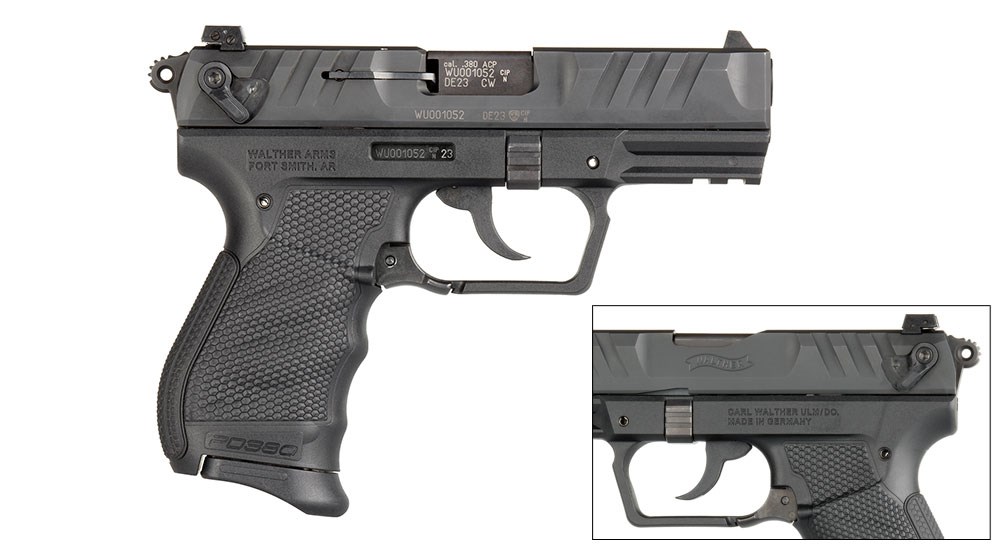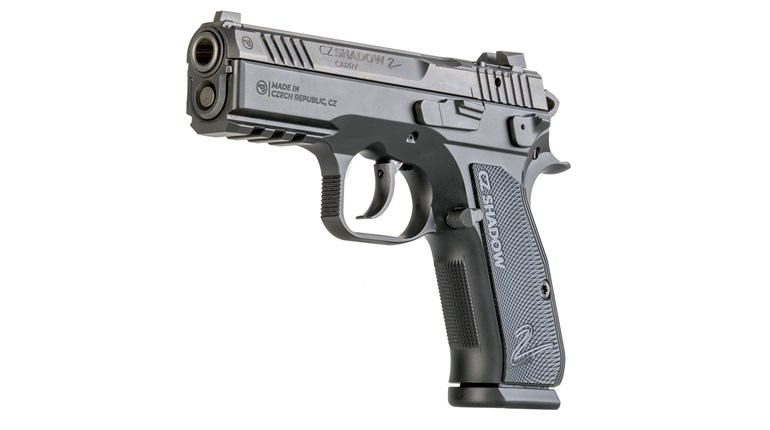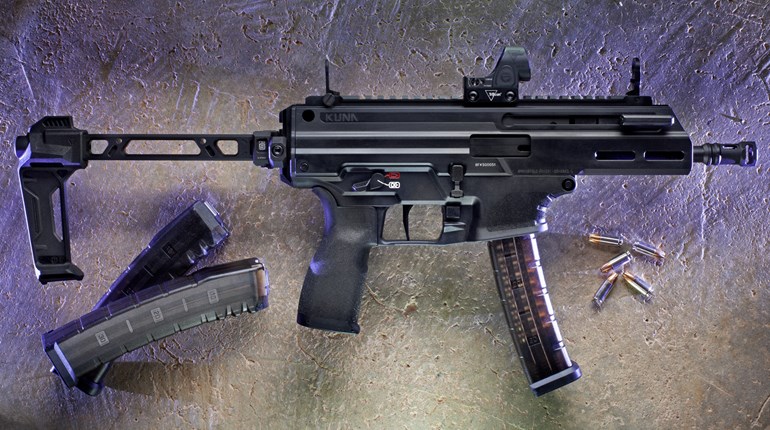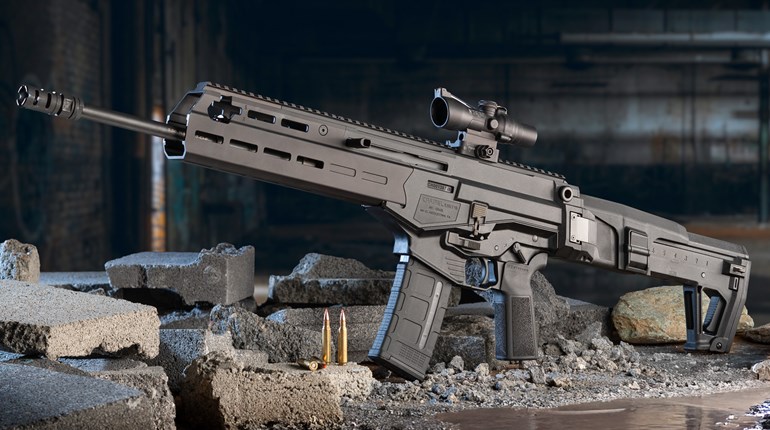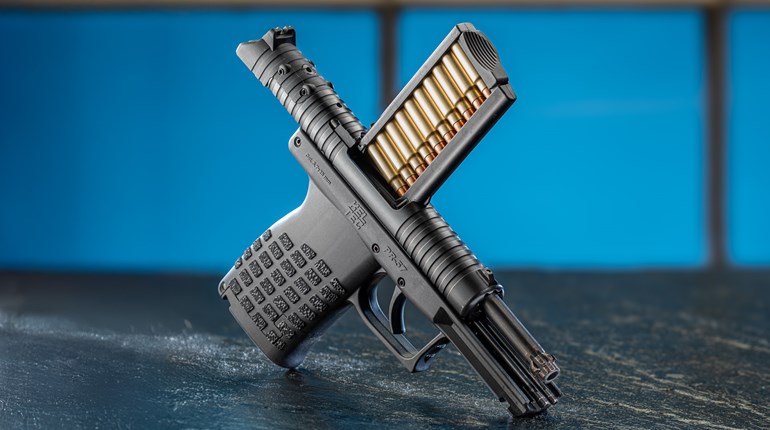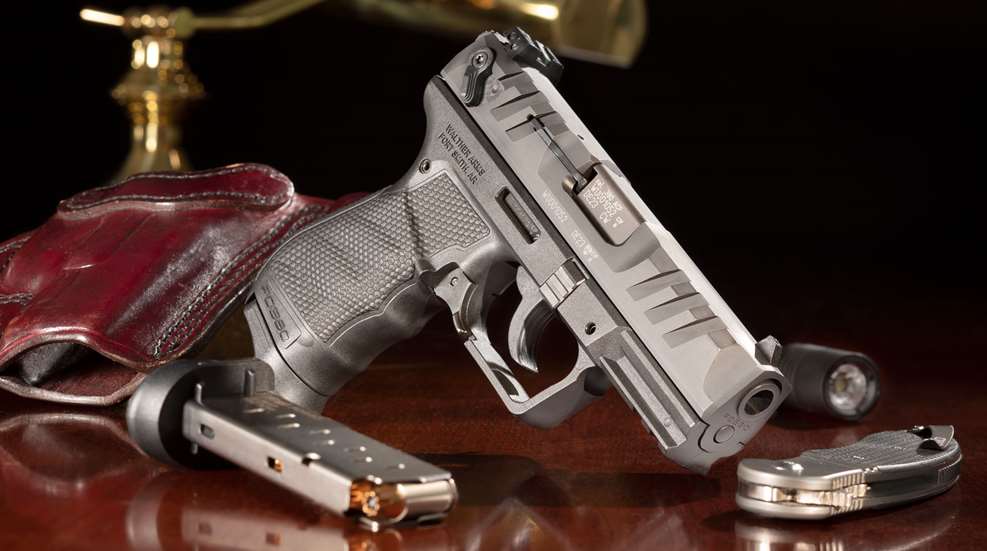
You hear a lot these days about “marginalized populations;” classes of people of routinely limited opportunity who exist at the margins of society. While I’m not so starved for entertainment as to slap that hornets’ nest, I will say that something similar goes on among self-defense cartridges. Huh? What?
The .380 ACP has long suffered the “soft bigotry of low expectations.” For years, descriptions of it have frequently included some form of the phrase “considered by experts as the minimum caliber suitable for self-defense.” Yup, the “9 mm Kurz” is just tall enough for this ride.
Because of its limited energy and the resultant mild stresses it places on handgun platforms, gun manufacturers have long chambered it mostly in tiny, deep-concealment pistols. Oh, sure, they’re easy to carry, but they’re also difficult to shoot well.
However, things are starting to change and the pistol pictured here, Walther’s new PD380, evinces that. The .380 ACP is being drawn in from the margins and appearing front and center on the page.
Better Bullets
What’s changed is ammunition. While everyone was paying close attention to developments in 9 mm jacketed-hollow-point ammunition during the past three decades, it slipped the notice of many that much of this same technology was trickling down to the .380 ACP. Skived jackets, precisely formed lead payloads and carefully tweaked pressures meant the stubby little medium-bore cartridge was making strides nearly as impressive as its slightly longer (by 2 mm) sibling.
Most notable among the new loads has been Federal Premium’s Hydra-Shok Deep, which has now been joined by that company’s Punch ammunition. So loaded, there is little reason a good-size pistol chambered in .380 ACP could not be carried on the belt as a primary self-defense firearm.
And that’s what we have here with the PD380. It’s a .380 ACP pistol intended to be worn on the belt (or carried in a purse). With an empty weight just .8 ounce less than a Glock G19, this is no pocket pistol.
What’s Old, What’s New?
The PD380 is a polymer-frame, hammer-fired, traditional double-action/single-action for those shooters who prefer a milder chambering than the 9 mm, but who don’t need or want to sacrifice ergonomics to gain the limited benefits of small size. Make no mistake, the PD380 is compact, just not to the point of being miniscule and difficult to operate. That said, it’s also a compilation of quirks which will be met with varying responses.
The initial impression of the pistol is that it’s another mini-9, albeit a handsome one. Nope, instead of a small 9 mm, you find that you are holding a relatively large .380 ACP. With a finger ledge on each of the two included single-stack magazines, it fully accommodates most hands.
Examining more closely, one finds there are a lot of features to like about the PD380, but also a few head-scratchers, too.
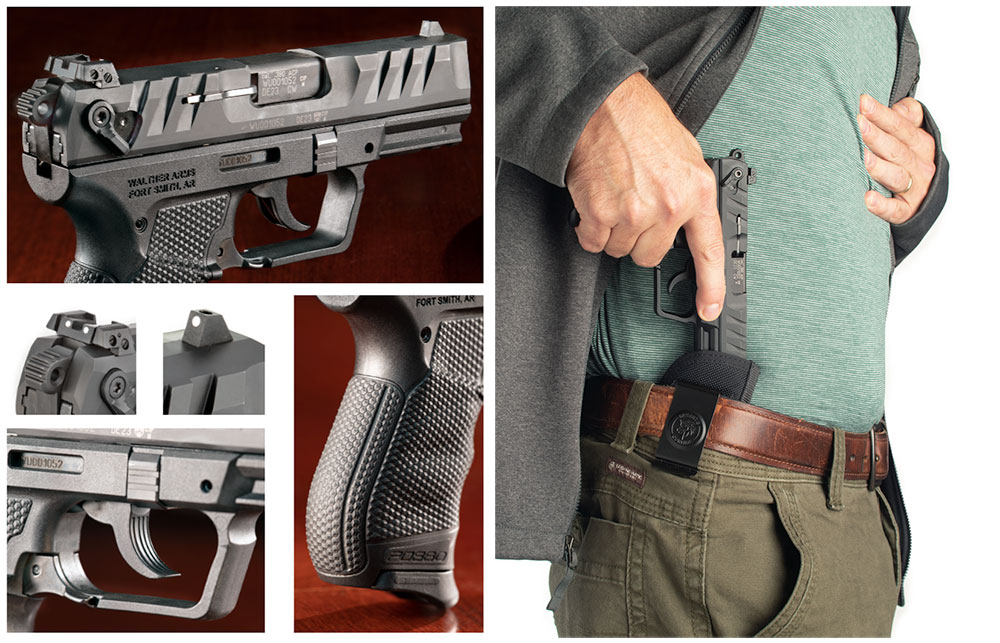
Because the gun is a hammer-fired, traditional DA/SA, if you encounter a hard primer, you typically need only another trigger pull to detonate the cap and get back in the fight. I experienced this a couple of times during testing, and the second strike was a charm.
The rear sight is fully adjustable, yet snag-resistant thanks to an enclosure that is also square-edged enough to allow one-handed racking on a belt or an available sharp edge in an emergency.
What Walther calls Performance Duty Grip Texture is something I’ve liked since I experienced it with the company’s PDP. Small hexagonal shapes molded into the surface provide secure, but non-abrasive purchase. Further, the grip frame has two gently angled, ovoid shapes on either side that perform a sort of alchemy, working as finger grooves on one side, but palm swells on the other, regardless of which hand you use.
The big, no-nonsense “superterrain” slide serrations are also borrowed from the PDP and work just as well here. This is not a .380 ACP for which you’ll fumble.
The rowel hammer is deeply serrated for excellent purchase and the design of the pistol simply eliminates the possibility of hammer bite.

Quirks
Where to start? The Walther PD380 has an ambidextrous, slide-mounted safety. I’m not crazy about it, and no one who handled the pistol spoke well of that feature. Why? Well, under stress, the body and muscles typically contract. We crouch, our hands (among other things) clench. So, in opposition to what your body wants to do naturally, you’re supposed to take your thumb and flip a small safety up and off? That’s a fairly fine-motor skill to try to pull off in a dire situation. So, why is it there? Probably because there is typically considerable newbie interest in .380 ACP-chambered pistols and novices (and some aficionados) like the idea of safeties. Unless you discover otherwise, they are a comfort and thus a selling point.
I wouldn’t ordinarily term a double-action trigger a quirk, but the way this one functions is. While it feels fine enough in single-action mode, the double-action is long and almost arduous. There’s a little slack, followed by gradually increasing weight that suddenly increases significantly before breaking at a 10 pounds, 5 ounces on our Lyman scale. In single-action mode, most of the travel is gone before there is a reason- ably smooth break at 7 pounds, 5 ounces (two more than touted, but our gun was brand new and an early production model).
The trigger itself is unusual in that it has a broad, deeply grooved and square-edged surface. One generally associates triggers like that with target pistols, expecting a combat trigger to be rounded and smooth.
A further quirk is one I rather like, though about which not everyone shares my enthusiasm. The PD380 has ambidextrous, paddle-style magazine releases, the paddles also forming the bottom rear portion of the trigger guard. The idea makes kinesthetic sense to me. You press down on the paddle with the intent of releasing the magazine in the same direction. It feels logical and I took to it like a communist to gun control. Others, however, disliked them intensely and could not operate them with either their strong-side thumb or trigger finger. It was mutually agreed, though, that—should you embrace them—it might be better to have all your carry guns be Walthers so equipped so you don’t experience any confused muscle memory in a crisis.
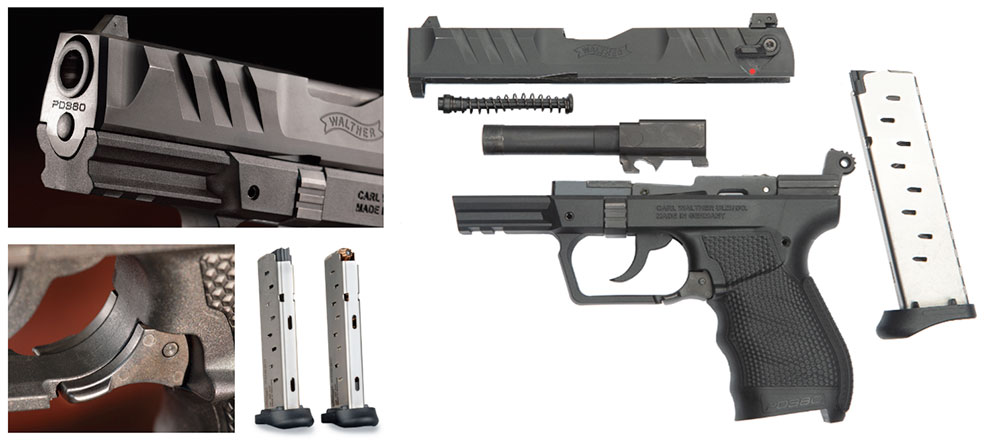
The last two quirks are not what is pre- sent, but what is absent. The PD380 has no slide lock. If you want to lock back the slide, you have to insert a magazine, rack the slide and either pop out the magazine or leave it in place. This made for a bit of tricky or tedious handling when making the gun safe. Most of us have been taught to pop the magazine before locking back the slide to show safe. This design frustrates that deeply ingrained impulse.
The other noteworthy absence was the lack of a slide cut for an MRDS. That makes the pistol one of the few recent belt gun introductions that is not red-dot ready. I suspect this was a cost-saving measure, but it was a surprise in that Walther’s flagship PDP was specifically designed to work particularly well with an MRDS. Personally, I’m not torn up about it and I was not alone in that sentiment. Besides, the irons are quite good.
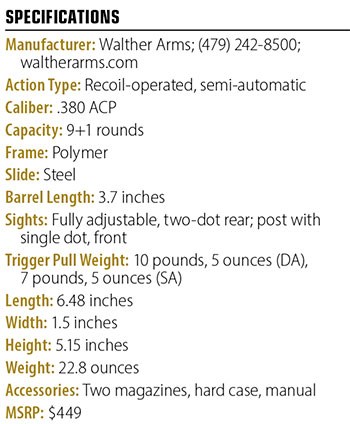 Performance
Performance
We requested a holster that never arrived. Nonetheless, we found three around the office that fit well. The PD380 carried OK, but not as well as it should have for its dimensions. A custom-fit holster with offset belt attachments would likely improve that situation considerably.
It’s important to note that the PD380’s safety is a firing-pin block, not a decocker. To carry in Condition One (“cocked & locked”), rack the slide to load the gun, then engage the safety and leave it engaged. Condition Two can be achieved by applying the safety, cocking the hammer and then—with the safety still engaged and the pistol pointed in a safe direction, controlling the hammer fall with your thumb or off hand while gently pressing the trigger. The firing pin block makes this possible, but Condition Two is highly unsafe with a 1911 pistol as its hammer cannot be lowered with the safety engaged. (It’s also tactically unsound, since you’d still have to thumb-cock the 1911 in order to fire it.) Once the hammer has been lowered on the PD380, the gun can be carried with the safety on, or with the safety disengaged. The heavy, double-action pull can provide the margin of safety, just as it does with a DAO semi-automatic or double-action revolver. Your skill and comfort levels should determine which method you prefer.
Yes, I know that Condition Three exists (hammer down on an empty chamber, safety off). I never carry that way, though; it takes too long and requires two hands.
At the range, I found that the double-action trigger pull was so long and heavy that I had great difficulty not dipping the pistol and sending the first shot low and left. The transition to single action was so acute that it felt like the trigger had not reset when, in fact, it had. I had another editor, a petite female, try the pistol to see if she experienced similar difficulty. She, of course, shot it perfectly well, surgically disabling several vital organs on an anatomical target. I listened to her critique while once again tearing my man-card into small pieces.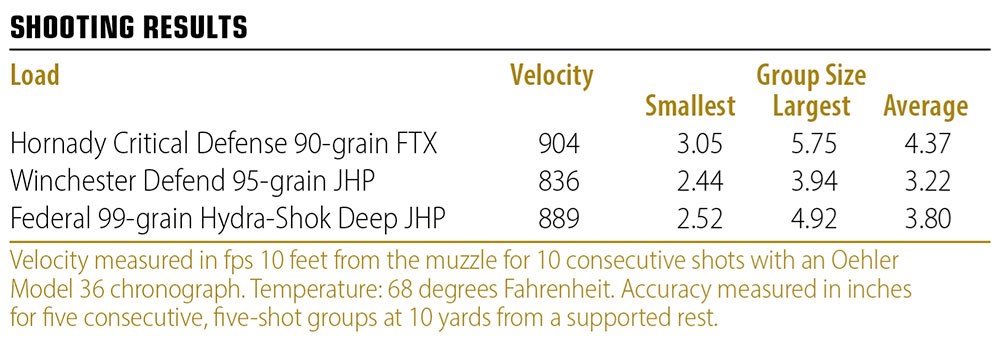
She agreed with me about the safety, though.
The PD380 has one especially appealing feature: Its MSRP is only $449. Despite being a more effective chambering thanks to some of the newer loads, the round’s virtues of mild felt recoil (and resultant fast transitions between targets), an easy-to-rack slide and easy-to-load magazines have been retained in the PD380. In fact, its size enhances these qualities. The pistol is part of what looks to be an increasingly large market segment of belt-size .380 ACPs for those who are recoil sensitive, have less hand strength or just find that they shoot the chambering particularly well, enhancing confidence.